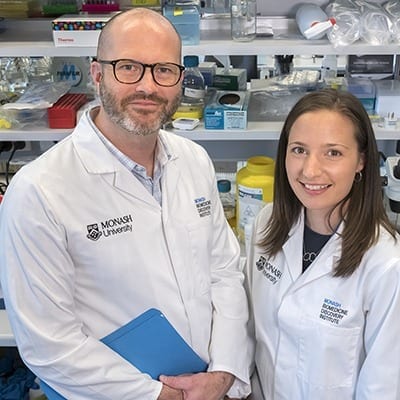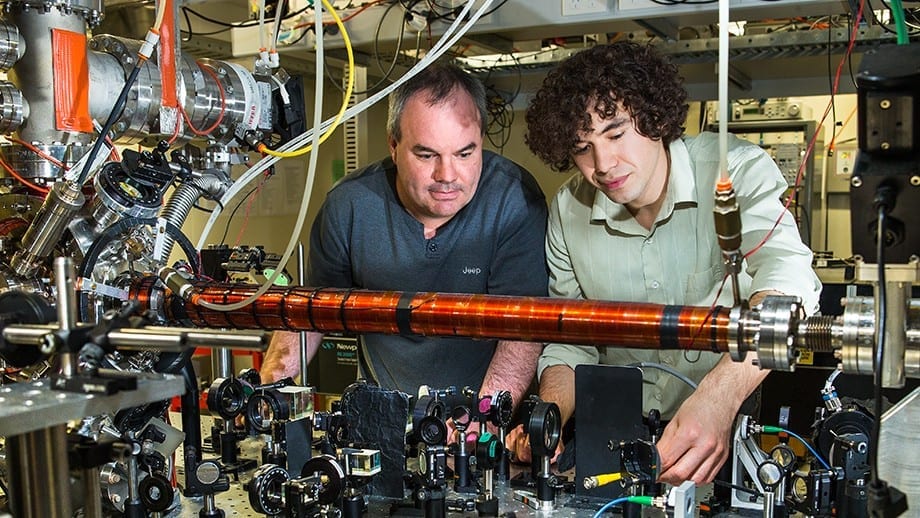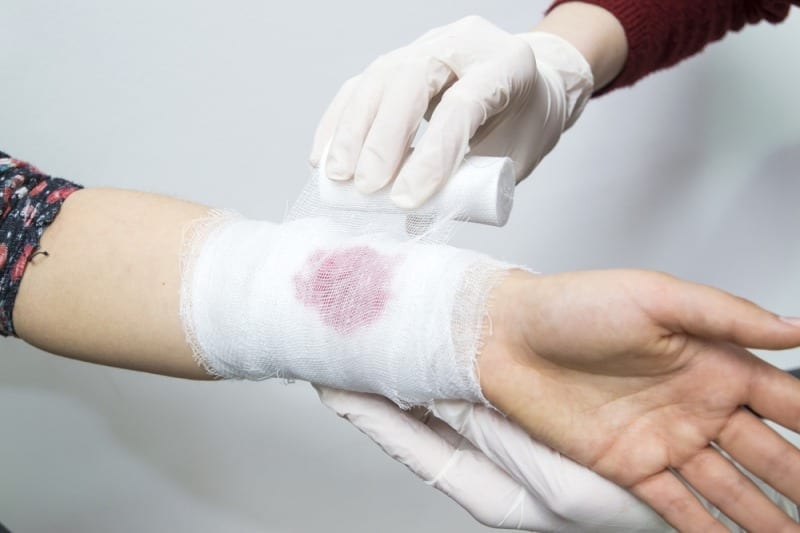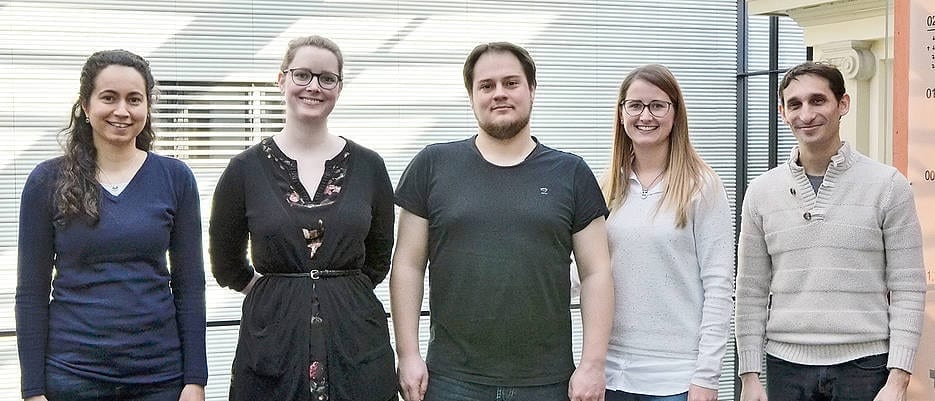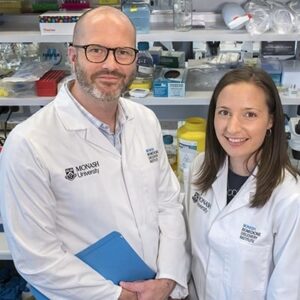
A research team has discovered the process – and filmed the actual moment – that can change the body’s response to a dying cell. Importantly – what they call the ‘Great Escape’ moment may one day prove to be the crucial trigger for autoimmune diseases like arthritis.
The research team discovered – and filmed – the exact moment when DNA escapes out of the mitochondria during cell death.
The study, published in Science, was led by Professor Benjamin Kile from Monash University’s Biomedicine Discovery Institute (BDI) and was a collaboration between the Walter and Eliza Hall Institute and Monash BDI, with the Howard Hughes Medical Institute (HHMI) Janelia Research Campus, US.
Mitochondria – the cell machinery that produce energy – are the ultimate double agent; they are essential to keep cells alive but, when damaged, they can trigger the body’s own immune system with potentially devastating consequences. The DNA inside mitochondria (mtDNA) has many similarities with bacterial DNA, and the body reacts to its presence outside the mitochondria, or indeed outside the cell, as if under attack from invading pathogens. A similar failure to distinguish ‘self’ from ‘non-self’ underlies inflammatory and autoimmune diseases.
New technology captures Great Escape
While the release of mtDNA is thought to contribute to autoimmune diseases such as lupus, how it escapes from the mitochondria has never been explained. Monash BDI researcher Dr Kate McArthur, while completing her PhD at the Walter and Eliza Hall Institute, and Institute co-author Dr Lachlan Whitehead used a revolutionary new microscope to capture the moment when mitochondria form a ‘hernia’ that balloons out of the mitochondria, expelling the DNA into the rest of the cell.
The live-cell lattice light-sheet microscope – developed by Nobel Prize winner Eric Betzig – is a new technique that allows scientists to observe living cells at groundbreaking resolution.
Dr McArthur, who traveled to the HHMI Janelia Research Campus multiple times between 2015 and 2017, remembers the moment when she witnessed, for the first time, the mitochondria actively expelling its DNA.
“As scientists, we are taught to be quite skeptical when we see something unexpected, so I think my initial reaction was “No way…”.
“It was only after I had carefully repeated the experiment many times that I began to realise what we had found,” she said.
A revolution in microscopy
With the lattice light-sheet microscope researchers can watch the inner workings of living cells with unprecedented detail and in ‘real time’; a groundbreaking achievement that has enabled research that – until now – was simply not possible.
Institute researchers Dr Lachlan Whitehead, Dr Niall Geoghegan and Dr Kelly Rogers, who were co-authors on the paper, spent seven months building the Institute’s lattice light-sheet microscope. It is the only custom-built microscope of its kind in Australia and was used in the final stages of the project.
Without the lattice light-sheet microscope technology, this research would not have been possible, Dr Rogers said.
“Imagine looking at a picture from the AFL Grand Final and trying to understand what happened from that one picture that captures one second of the game. It isn’t possible.
“With the lattice light-sheet, we can watch the whole match in real time and in high definition. It is a game changer,” Dr Rogers said.
Collateral damage
Professor Kile said when a cell committed suicide – a normal part of the human body’s balancing act to control blood cell numbers – two proteins called BAK and BAX were triggered.
“What we witnessed – in real time – was these professional killer proteins opening up huge ‘macropores’ in the outer membrane of the mitochondria, leading the inner contents to herniate out, and bringing the mtDNA with it,” Professor Kile said.
“BAK and BAX deliver the ‘kill shot’ designed to permanently disable the cell. But in doing that, mtDNA is lost from the mitochondria. In essence, this is collateral damage, which, if it isn’t controlled properly, triggers the immune system to drive pathological inflammation,” he said.
The discovery was cemented by images captured by Monash University’s Titan Krios cryo-electron microscope, currently the most advanced microscope for biological electron microscopy, and the Walter and Eliza Hall Institute’s new, custom-built lattice light-sheet microscope.
Learn more: DNA gets away: scientists catch the rogue molecule that can trigger autoimmunity
The Latest on: Autoimmunity
[google_news title=”” keyword=”Autoimmunity” num_posts=”10″ blurb_length=”0″ show_thumb=”left”]
via Google News
The Latest on: Autoimmunity
- Fate Therapeutics Reports First Quarter 2024 Financial Results and Business Updateson May 9, 2024 at 3:01 pm
First Lupus Patient Treated with FT819 CAR T-cell Product Candidate in Phase 1 Autoimmunity Study; Future Clinical Development of FT819 to Focus ...
- Collaboration uncovers an entirely new COVID-related syndromeon May 9, 2024 at 9:55 am
Pradipta Ghosh, M.D., sat down in her office at the University of California San Diego School of Medicine and considered a request from the other side of the world.
- Fate Therapeutics Announces First Lupus Patient Treated in Phase 1 Autoimmunity Study of Off-the-shelf FT819 CAR T-cell Programon May 9, 2024 at 5:30 am
Pre-treatment Sample of Patient’s Blood Showed Rapid and Potent Depletion of CD19+ B Cells in Ex Vivo Cytotoxicity Assay with FT819 Translational Data from FT819 Phase 1 B Cell Malignancies Study ...
- World Lupus Day: Harnessing Strength in the Fight Against Autoimmunityon May 9, 2024 at 1:15 am
Lupus, a complex autoimmune disease, often lurks in the shadows of public awareness despite its profound impact on millions worldwide. Origi..|News Track ...
- Can Vitamin D Improve Cancer Immunotherapy?on May 8, 2024 at 6:30 am
Your diet could impact your cancer treatment’s progress; a new preclinical study suggests more vitamin D could improve responses to checkpoint inhibitors.
- South Africa's cesarean birth rates are too high—they can be dangerous for mothers and babieson May 7, 2024 at 9:38 am
Immune failure and lack of immune tolerance (allergy, asthma and autoimmunity) are clearly associated with cesarean births. Cesarean section delivery is often perceived as the safer way to give birth.
- Commentary: Why we don't hear more about autoimmunity diseases — Molly Murrayon April 29, 2024 at 10:20 pm
Autoimmune diseases cover more than 100 conditions — some with familiar names like lupus, multiple sclerosis, rheumatoid arthritis, psoriasis and diabetes.
- Why don’t we hear more about autoimmunity diseases?on April 28, 2024 at 4:00 am
Miller, says autoimmunity needs to be a priority. “To keep it from destroying so many lives, we urgently need to understand these diseases better and find more effective ways to prevent, diagnose, ...
- Recent Advances in Adrenal Autoimmunityon April 16, 2024 at 5:01 pm
The current unavailability of a reliable animal model of spontaneous adrenal autoimmunity similar to the human disease has thus far limited studies on the pathophysiology of AAD. Major efforts are ...
- Immune Dysregulation – Autoimmunity and Allergyon January 16, 2024 at 2:47 pm
Immune dysregulation is often defined as an immune response that is directed against one of the body’s own tissues, cells or molecules (e.g. autoimmunity) or against an innocuous foreign molecule that ...
via Bing News
The Latest on: Autoimmunity
[google_news title=”” keyword=”autoimmunity” num_posts=”10″ blurb_length=”0″ show_thumb=”left”]- Fate Therapeutics Reports First Quarter 2024 Financial Results and Business Updateson May 9, 2024 at 3:01 pm
First Lupus Patient Treated with FT819 CAR T-cell Product Candidate in Phase 1 Autoimmunity Study; Future Clinical Development of FT819 to Focus ...
- Collaboration uncovers an entirely new COVID-related syndromeon May 9, 2024 at 9:55 am
Pradipta Ghosh, M.D., sat down in her office at the University of California San Diego School of Medicine and considered a request from the other side of the world.
- Fate Therapeutics Announces First Lupus Patient Treated in Phase 1 Autoimmunity Study of Off-the-shelf FT819 CAR T-cell Programon May 9, 2024 at 5:30 am
Pre-treatment Sample of Patient’s Blood Showed Rapid and Potent Depletion of CD19+ B Cells in Ex Vivo Cytotoxicity Assay with FT819 Translational Data from FT819 Phase 1 B Cell Malignancies Study ...
- World Lupus Day: Harnessing Strength in the Fight Against Autoimmunityon May 9, 2024 at 1:15 am
Lupus, a complex autoimmune disease, often lurks in the shadows of public awareness despite its profound impact on millions worldwide. Origi..|News Track ...
- Can Vitamin D Improve Cancer Immunotherapy?on May 8, 2024 at 6:30 am
Your diet could impact your cancer treatment’s progress; a new preclinical study suggests more vitamin D could improve responses to checkpoint inhibitors.
- South Africa's cesarean birth rates are too high—they can be dangerous for mothers and babieson May 7, 2024 at 9:38 am
Immune failure and lack of immune tolerance (allergy, asthma and autoimmunity) are clearly associated with cesarean births. Cesarean section delivery is often perceived as the safer way to give birth.
- Commentary: Why we don't hear more about autoimmunity diseases — Molly Murrayon April 29, 2024 at 10:20 pm
Autoimmune diseases cover more than 100 conditions — some with familiar names like lupus, multiple sclerosis, rheumatoid arthritis, psoriasis and diabetes.
- Why don’t we hear more about autoimmunity diseases?on April 28, 2024 at 4:00 am
Miller, says autoimmunity needs to be a priority. “To keep it from destroying so many lives, we urgently need to understand these diseases better and find more effective ways to prevent, diagnose, ...
- Recent Advances in Adrenal Autoimmunityon April 16, 2024 at 5:01 pm
The current unavailability of a reliable animal model of spontaneous adrenal autoimmunity similar to the human disease has thus far limited studies on the pathophysiology of AAD. Major efforts are ...
- Immune Dysregulation – Autoimmunity and Allergyon January 16, 2024 at 2:47 pm
Immune dysregulation is often defined as an immune response that is directed against one of the body’s own tissues, cells or molecules (e.g. autoimmunity) or against an innocuous foreign molecule that ...
via Google News and Bing News







